Nutrition
If you find a broken link in this list, please report it to the webmaster.
The truth about carbs

"Carbs" has become a dirty word in recent times, especially in the weight loss world, due in no small part to the popularity of low-carb diets such as the Atkins, Dukan and South Beach.
The "carbs are bad" mantra from Dr Atkins and co has left many people confused about carbohydrates and their importance for your health, including maintaining a healthy weight.
Dietitian Sian Porter says: "Carbohydrates are such a broad category and people need to know that not all carbs are the same and it is the type and quantity of carbohydrate in our diet that is important.
"While we should reduce the amount of sugar in our diet, we should base our meals on starchy carbs. There is strong evidence that fibre, found in wholegrain versions of starchy carbs for example, is good for our health.”
Find out all you need to know about carbohydrates, their health benefits, healthier sources of carbs and how carbs can actually help you lose weight.
What are carbs?
Carbohydrates are a source of energy. When eaten, the body converts most carbohydrates into glucose (sugar), which is used to fuel cells such as those of the brain and muscles.
Carbohydrates are one of three macronutrients (nutrients that form a large part of our diet) found in food – the others being fat and protein. Hardly any foods contain only one nutrient and most are a combination of carbohydrates, fats and proteins in varying amounts. There are three different types of carbohydrate: sugar, starch and fibre.
- Sugar is found naturally in some foods, including fruit, honey, fruit juices, milk (lactose) and vegetables. Other forms of sugar (for example table sugar) can be added to food and drink such as sweets, chocolates, biscuits and soft drinks during manufacture, or added when cooking or baking at home. Remember: sugar is a carbohydrate but not all carbs are sugars. Find out more about sugar.
- Starch, made up of many sugar units bonded together, is found in foods that come from plants. Starchy foods, such as bread, rice, potatoes and pasta, provide a slow and steady release of energy throughout the day. Find out more about starchy foods.
- Fibre is only found in foods that come from plants. Fibre helps keep our bowels healthy and some types of fibre may help lower cholesterol. Research shows diets high in fibre are associated with a lower risk of cardiovascular disease, type 2 diabetes and bowel cancer. Good sources of fibre include vegetables with skins on, wholegrain bread, wholewheat pasta and pulses (beans and lentils). Find out more about fibre.
Why do we need carbs?
Carbs are important to your health for a number of reasons. In a healthy balanced diet they are the body’s main source of energy. High fibre, starchy carbs release sugar into the blood more slowly than sugary foods and drinks.
Energy
Carbs should be the body’s main source of energy in a healthy balanced diet, providing about 4kcal (17kJ) per gram. Carbs are broken down into glucose (sugar) before being absorbed into the bloodstream. From there, the glucose enters the body’s cells with the help of insulin. Glucose is used by your body for energy, fuelling all of your activities, whether going for a run or breathing. Unused glucose can be converted to glycogen found in the liver and muscles. If unused, glucose can be converted to fat, for long-term storage of energy.
Disease risk
Vegetables, pulses, wholegrain varieties of starchy foods, and potatoes eaten with their skins on are good sources of fibre. Fibre is an important part of a healthy balanced diet. It can promote good bowel health, reduce the risk of constipation, and some forms of fibre have been shown to reduce cholesterol levels. Many people don't get enough fibre. On average, most people in the UK get about 18g of fibre a day. We are advised to eat an average of 30g a day.
Calorie intake
Carbohydrate contains fewer calories gram for gram than fat, and starchy foods can be a good source of fibre, which means they can be a useful part of a weight loss plan. By replacing fatty, sugary foods and drinks with high-fibre starchy foods, it is more likely you will reduce the number of calories in your diet. Also high fibre foods add bulk to your meal helping you feel full. "You still need to watch your portion sizes to avoid overeating,” says Sian. “Also watch out for the added fats used when you cook and serve them: this is what increases the calorie content."
Should I cut out carbs?
While we can most certainly survive without sugar, it would be quite difficult to eliminate carbs entirely from your diet. Carbohydrates are the body's main source of energy. In the absence of carbohydrate, your body will use protein and fat for energy.
However, cutting out starchy foods from your diet could put you at increased risk of a deficiency in certain nutrients, leading to health problems (see above), unless you're able to make up for the nutritional shortfall with healthy substitutes.
It may also be hard to get enough fibre, which is important for a healthy digestive system and to prevent constipation. Healthy sources of carbs such as starchy foods, vegetables, fruits, legumes and dairy products are an important source of nutrients such as calcium, iron and B vitamins.
Cutting out carbohydrates and replacing those calories with fats and higher fat sources of protein could increase your intake of saturated fat, which can raise the amount of cholesterol in your blood – a risk factor for heart disease.
When you are low on glucose, the body breaks down stored fat to convert it into energy. This process causes a buildup of ketones in the blood, resulting in ketosis. Ketosis as a result of a low carbohydrate diet can be accompanied by headaches, weakness, nausea, dehydration, dizziness and irritability particularly in the short term.
Try to limit the amount of sugary foods you eat and instead include healthier sources of carbohydrate in your diet such as wholegrains, potatoes, vegetables, fruits, legumes and lower fat dairy products. Read the British Dietetic Association's review of low-carb diets, including the paleo, Dukan, Atkins, and South Beach diets.
Don’t protein and fat provide energy?
While carbs, fat and protein are all sources of energy in the diet, the amount of energy that each one provides varies:
- carbohydrate provides: about 4kcal (17kJ) per gram
- protein provides: 4kcal (17kJ) per gram
- fat provides: 9kcal (37kJ) per gram
In the absence of carbohydrates in the diet your body will convert protein (or other non-carbohydrate substances) into glucose, so it's not just carbs that can raise your blood sugar and insulin levels.
If you consume more calories than you burn from whatever source, carbs, protein or fat, you will gain weight. So cutting out carbs or fat does not necessarily mean cutting out calories if you are replacing them with other foods containing the same amount of calories.
Are carbs more filling than protein?
Carbs and protein contain roughly the same number of calories per gram, and fat contains almost twice as many calories per gram as carbs or protein. But other factors influence the sensation of feeling full such as the type and variety of food eaten, eating behaviour and environmental factors, such as portion size and availability of food choices. The sensation of feeling full can also vary from person to person. Among other things, protein-rich foods can help you feel full and we should have some meat, fish, eggs, beans and dairy products as part of a healthy balanced diet. But we shouldn’t eat too much of these foods. Remember that starchy foods should make up about a third of the food we eat and we all need to be eating more fruit and vegetables.
How much carbohydrate should I eat?
The Government’s healthy eating advice, illustrated by the Eatwell Guide up of starchy foods, such as bread, rice, potatoes and pasta, and another third should be fruit and vegetables. This means that about half of your daily calorie intake should come from starchy foods, fruit and vegetables. Data from the National Diet and Nutrition Survey, which looks at food consumption in the UK, shows that most of us should also be eating more fibre and starchy foods and fewer sweets, chocolates, biscuits, pastries and cakes. Try to aim for at least five portions of a variety of fruit and veg a day. Go for wholegrain starchy foods whenever you can and eat potatoes with their skins on.
What carbs should I be eating?
Sweets, chocolates, biscuits, cakes and soft drinks with added sugar are usually high in sugar and calories, which can increase the risk of tooth decay and contribute to weight gain if you eat them too often, while providing few other nutrients.
Fruit, vegetables, pulses and starchy foods (especially wholegrain varieties) provide a wider range of nutrients (such as vitamins and minerals) which can benefit our health. The fibre in these foods can help to keep your bowels healthy and adds bulk to your meal helping you to feel full.
Sian says: “Cutting out a whole food group (such as starchy foods) as some diets recommend could put your health at risk because as well as cutting out the body’s main source of energy you’d be cutting back essential nutrients like B vitamins, zinc and iron from your diet.”
How can I increase my fibre intake?
To increase the amount of fibre in your diet, go for wholegrain varieties of starchy foods and eat potatoes with skins on. Try to aim for an average intake of 30g of fibre a day. Here are some examples of the typical fibre content in some common foods:
- two breakfast wheat biscuits (approx. 37.5g) – 3.6g of fibre
- one slice of wholemeal bread – 2.5g (one slice of white bread – 0.9g)
- 230g serving of cooked wholewheat pasta – 9.7g (230g of cooked spaghetti – 3.9g)
- one medium (180g) baked potato (with skin) – 4.7g
- 200g of baked beans – 9.8g
- 1 medium orange – 1.9g
- 1 medium banana – 1.4g
Can eating low GI (glycaemic index) foods help me lose weight?
The glycaemic index (GI) is a rating system for foods containing carbohydrates. It shows how quickly each food affects glucose (sugar) levels in your blood, when that food is eaten on its own. Some low GI foods, such as wholegrain foods, fruit, vegetables, beans and lentils are foods we should eat as part of a healthy balanced diet. However, using GI to decide whether foods or a combination of foods are healthy or can help with weight reduction can be misleading.
Although low GI foods cause blood sugar levels to rise and fall slowly and therefore may help you to feel fuller for longer, not all low GI foods are healthy. For example, watermelon and parsnips are high GI foods, while chocolate cake has a lower GI value. Also, the cooking method and eating foods in combination as part of a meal, will change the GI rating. Therefore, relying on GI alone is not a reliable way to decide whether foods or combinations of foods are healthy or will help you to lose weight.
Find out more about the glycaemic index (GI).
Do carbs make you fat?
Any food can be fattening if you overeat. It doesn't seem to matter a whole lot whether your diet is high in fat or carbs, but how much you eat in total. In fact, gram for gram, carbohydrate contains fewer than half the calories of fat. Wholegrain varieties of starchy foods and potatoes eaten with their skins on are good sources of fibre. Foods high in fibre add bulk to your meal and help you to feel full.
However, foods high in sugar are often high in calories and eating these foods too often can contribute to you becoming overweight. There is some evidence that diets high in sugar are associated with an increased energy content of the diet overall, which over time can lead to weight gain.
“When people cut out carbs and lose weight, it’s not just carbs they’re cutting out, they’re cutting out the high-calorie ingredients mixed in or eaten with it, such as butter, cheese, cream, sugar and oil,” says Sian. "Eating too many calories – whether they are carbs, protein or fat – will contribute to weight gain.”
To maintain a healthy weight, we are advised to cut down on sugary foods in favour of fruit, vegetables, pulses, wholegrain starchy foods and potatoes with skins on, while still keeping a watchful eye on portion size.
Can cutting out wheat help me lose weight?
Some people point to bread and other wheat-based foods as the main culprit for their weight gain. Wheat is found in a wide range of foods, from bread, pasta and pizza, to cereals and many other foods. However, there is no evidence that wheat is more likely to cause weight gain than any other food. The point is if you consume more calories than your body needs, you will put on weight, regardless of the type of food you eat.
Unless you have a diagnosed health condition such as wheat allergy, wheat sensitivity or coeliac disease, there is little evidence that cutting out wheat and other grains from your diet would benefit your health. Grains, especially wholegrains, are an important part of a healthy balanced diet. All types of grains provide carbs, vitamins and minerals. Grains are also naturally low in fat.
Find out if cutting out bread could help ease bloating or other digestive symptoms.
Should people with diabetes avoid carbs?
Diabetes UK recommends that people with diabetes should try to eat a healthy balanced diet, as depicted in the Eatwell Guide, and to include starchy foods at every meal. Steer clear of cutting out entire food groups. It is recommended that everyone with diabetes sees a registered dietitian for specific advice on their food choices. Your GP can refer you to a registered dietitian.
Diabetes UK says there is some evidence which suggests that low-carb diets can lead to weight loss and improvements in blood glucose control in people with type 2 diabetes in the short term. However, it is unclear whether the diet is a safe and effective way to manage type 2 diabetes in the long term.
Weight loss from a low-carb diet may be because of a reduced intake of calories overall and not specifically as a result of eating less carbohydrate. There is also not enough evidence to support the use of low-carb diets in people with type 1 diabetes.
Douglas Twenefour, Diabetes UK clinical adviser, says: “When considering a low-carbohydrate diet as an option, people with diabetes should be made aware of possible side effects such as the risk of hypoglycaemia (low blood sugar). We also advise that people with diabetes discuss the amount of carbohydrate to be restricted with their healthcare team.
“The best way to manage diabetes is by taking prescribed medications and by maintaining a healthy lifestyle that includes plenty of physical activity and a balanced diet that is low in saturated fat, salt and sugar and rich in fruit and vegetables, without completely cutting out any particular food groups.”
Read Diabetes UK's review of the evidence from 1998 to 2009 on low-carb diets and their conclusions.
What’s the role of carbs in exercise?
Carbohydrates, fat and protein all provide energy, but exercising muscles rely on carbohydrates as their main source of fuel. However, muscles have limited carb stores (glycogen) and they need to be topped up regularly to keep your energy up. A diet low in carbs can lead to a lack of energy during exercise, early fatigue and delayed recovery. Fat and protein are harder to turn into energy than carbs, which means you may feel low on energy during your exercise session.
When is the best time to eat carbs?
When you should eat carbohydrates particularly for weight loss is the subject of much debate, but there's little scientific evidence that one time is better than any other. “You should have some starchy carbs in appropriate portions with most meals, choosing high-fibre varieties whenever you can,” says Sian.
*** CLICK AT ANY PICTURE below TO ENLARGE IT and see a SLIDE SHOW***
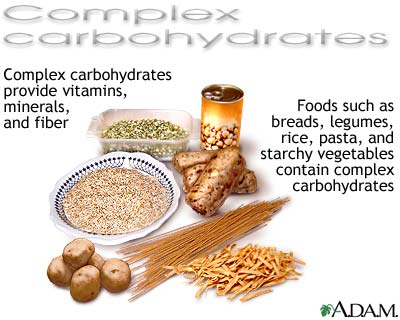 |
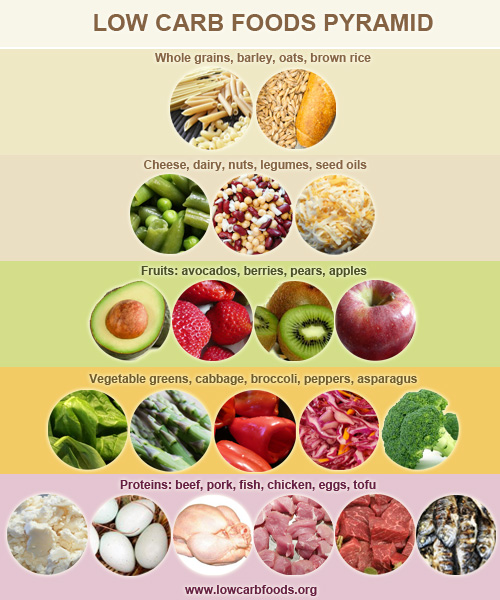 |
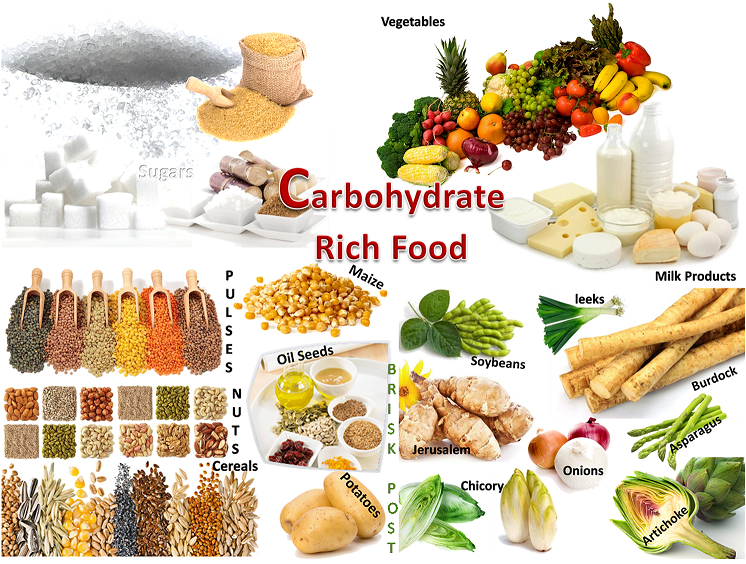 |
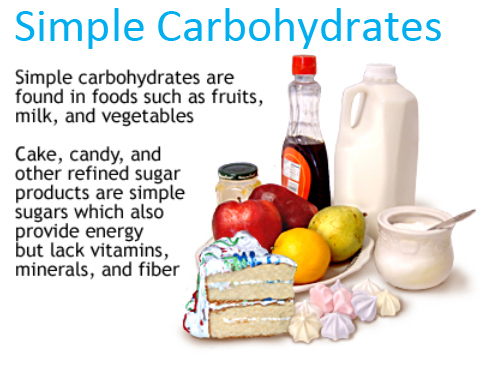 |
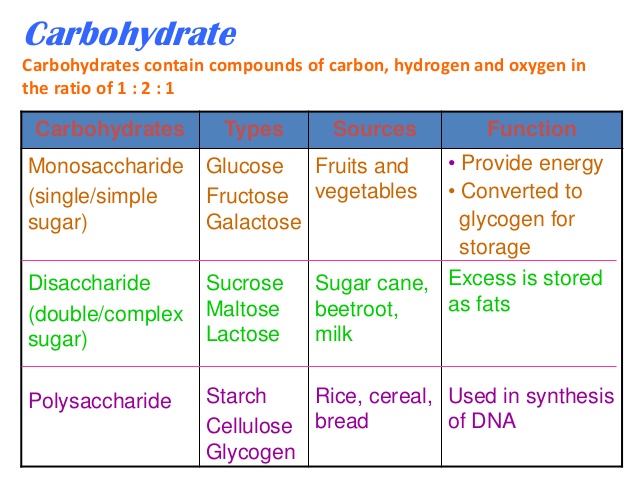 |
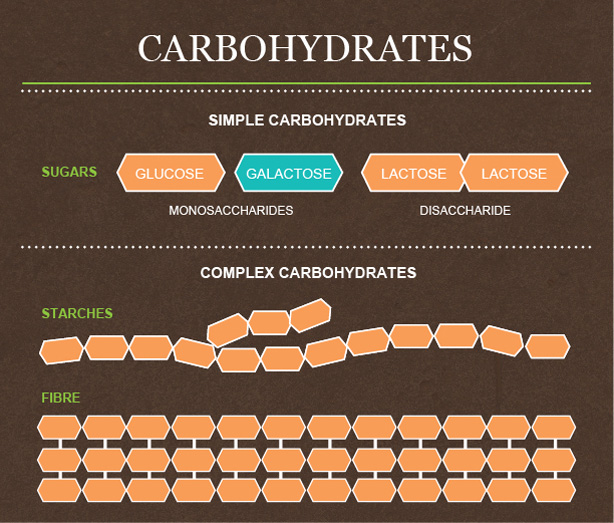 |
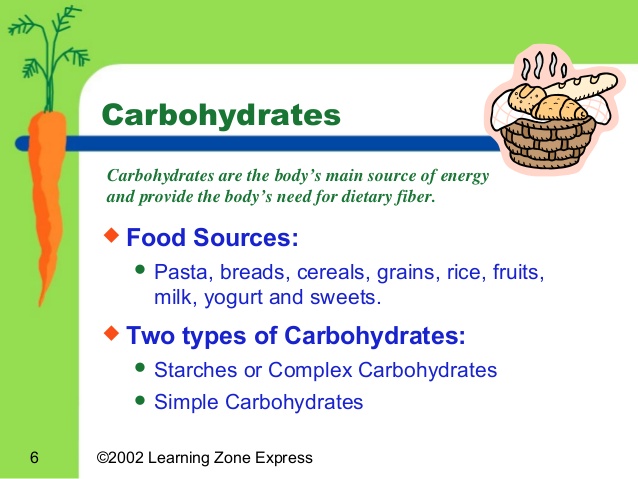 |
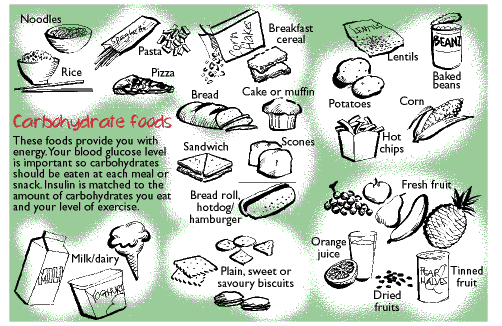 |
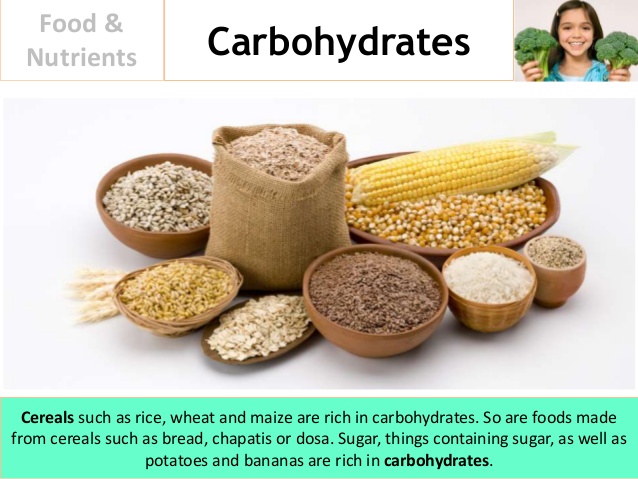 |
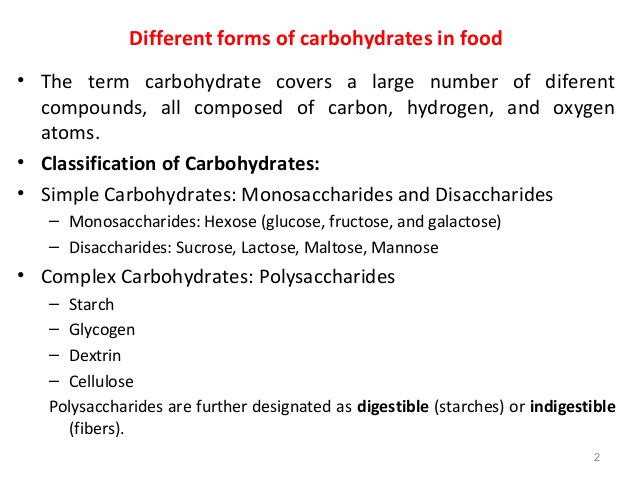 |
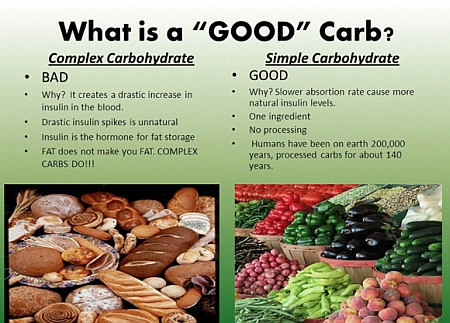 |
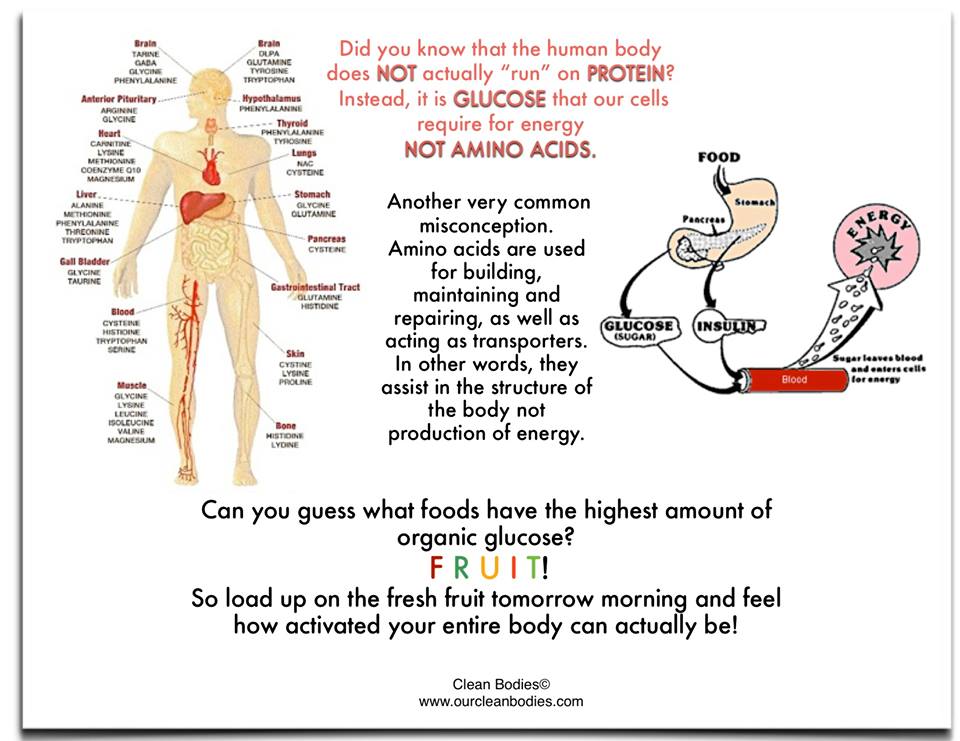 |
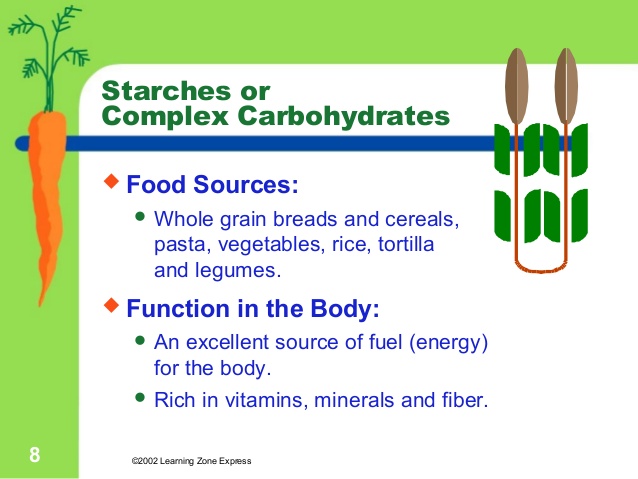 |
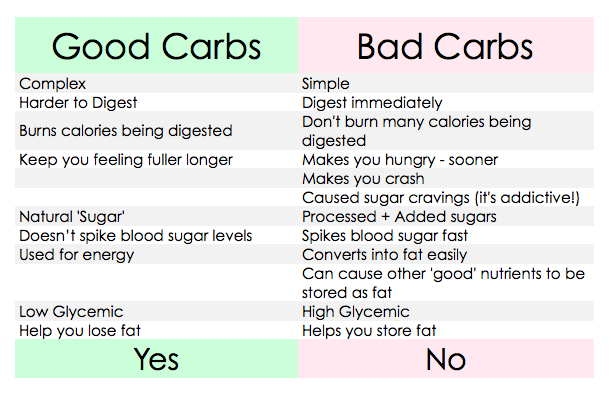 |
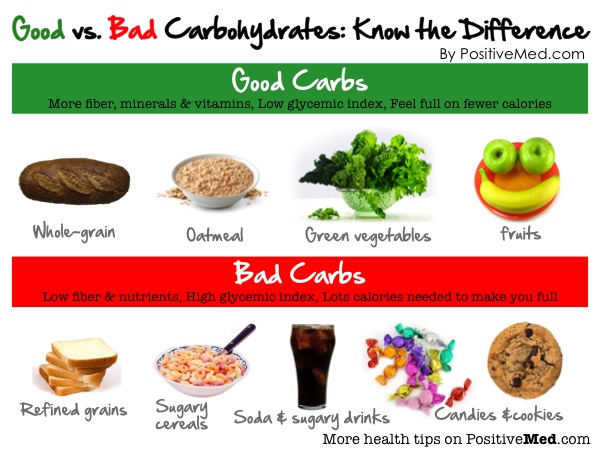 |
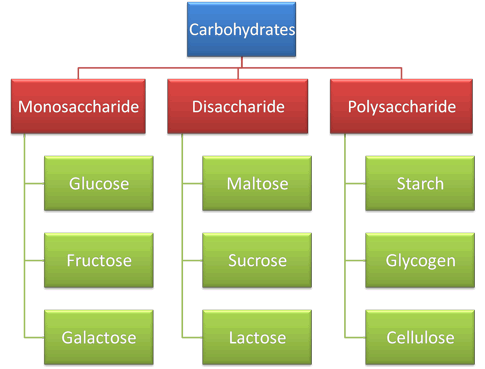 |
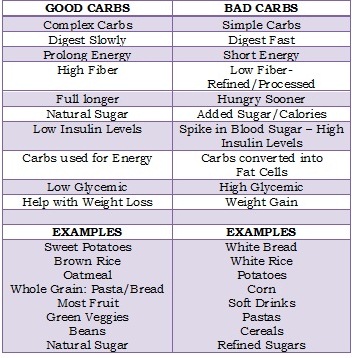 |
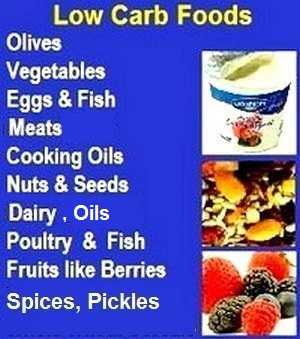 |
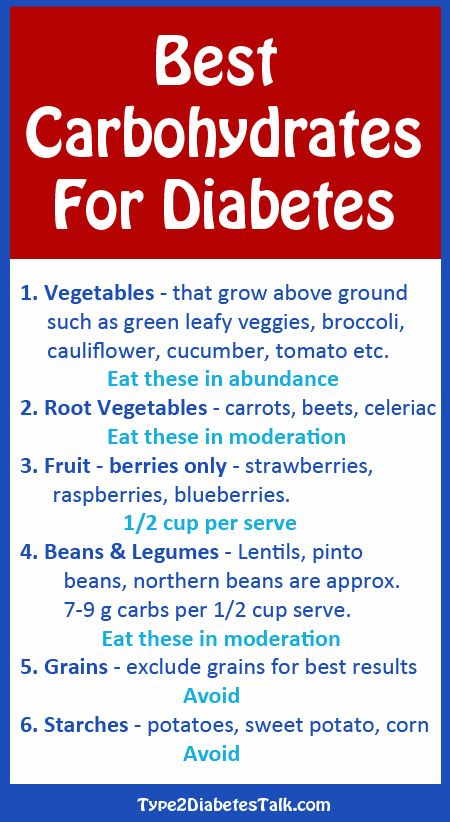 |
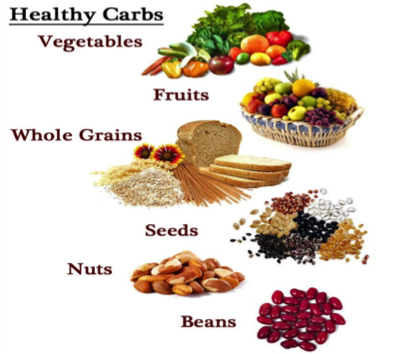 |